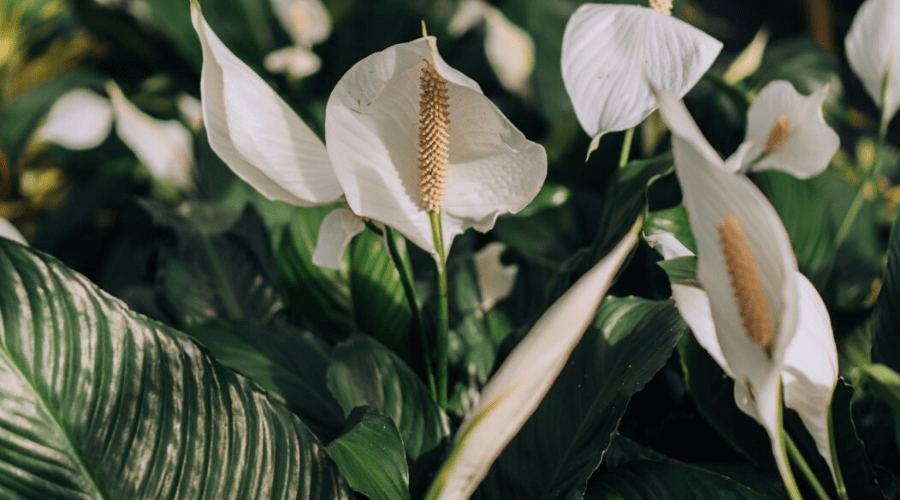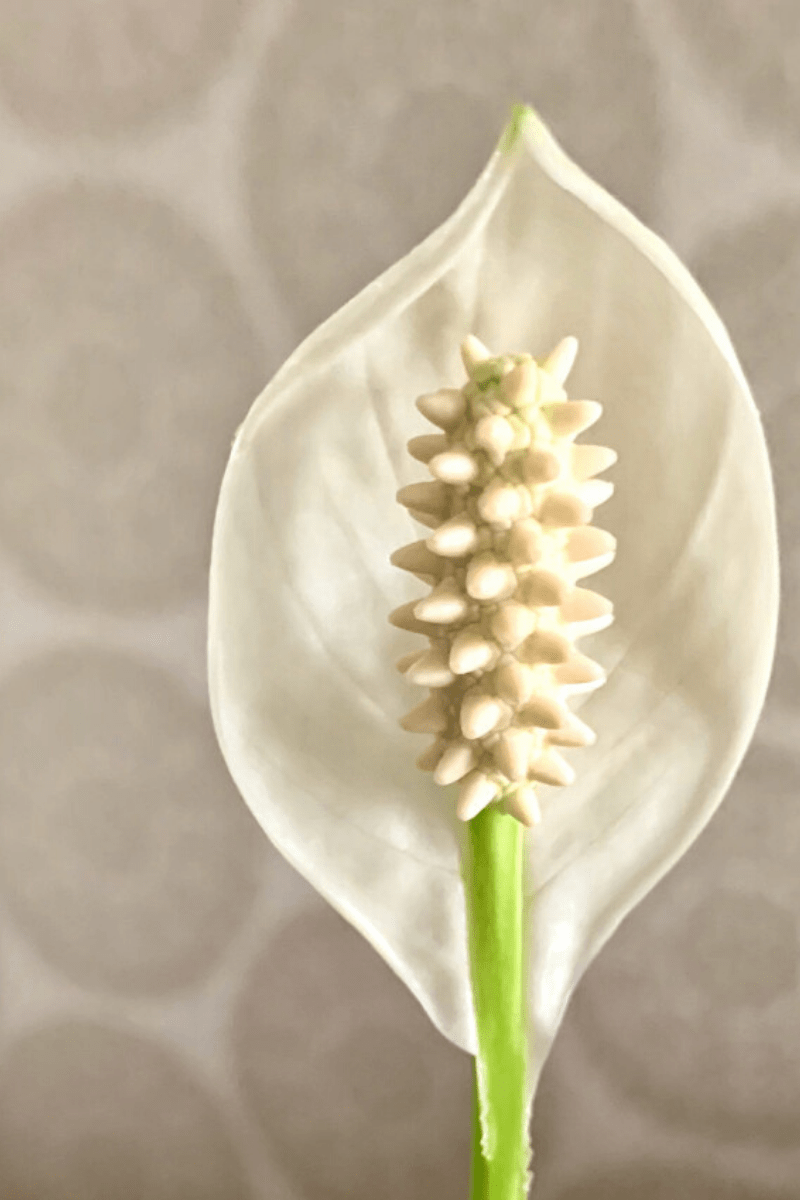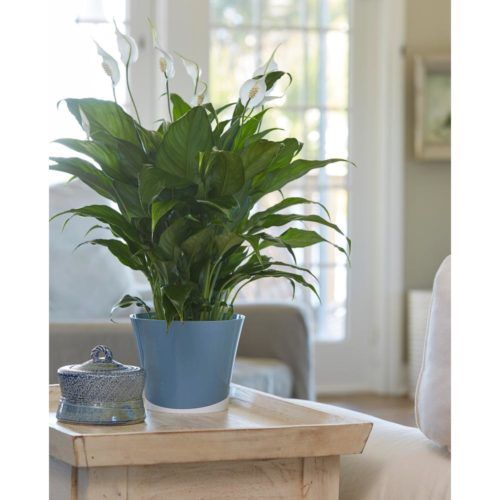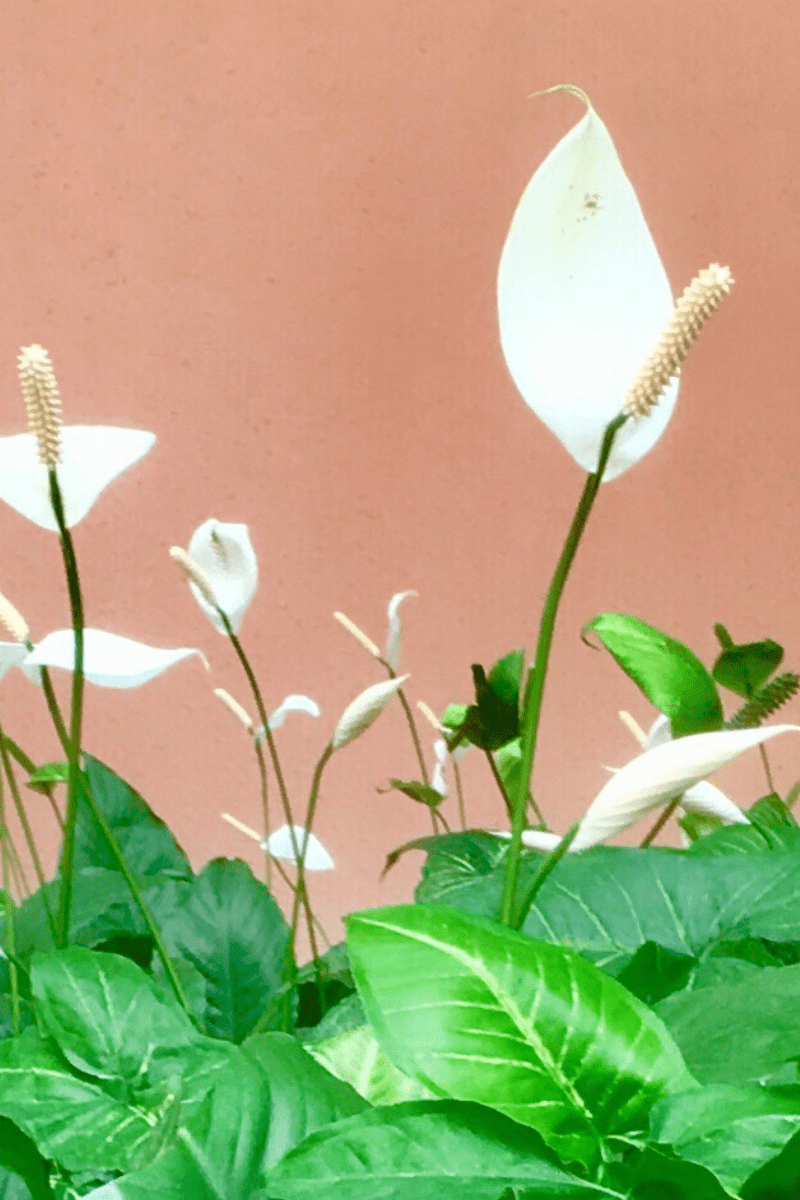There are hundreds of plants you can use to add style to your home or patio. However, one of the more popular options is the peace lily. It's relatively easy to maintain and thrives in a variety of environments. Additionally, the plant has a unique appearance that matches a variety of decors. If you're interested in owning and growing a peace lily (or a few!), check out this guide and learn everything you need to know about this plant.
Peace Lily Details
Spathiphyllum wallisii
AKA: Spath lily
Light: Indirect, medium to bright light
Water: Frequent, keeping soil moist even in winter.
Temperature range: 65-80° F
Height: Up to 48 inches indoors
Fertilizer: Weekly in spring and summer.
Special care: Toxic to children and pets.
How to Care for a Peace Lily
Although the peace lily is easy to grow, it still requires some basic conditions and care. Learning what it needs will help you keep your plant in top condition.
First, it needs to be in medium, indirect light. If your out it in an area that receives too much sun, the plant will start to turn yellow yellow. As soon as you notice yellowing leaves, move the plant to an area with less light.
Secondly, the plant needs a warm temperature. It can't withstand temperatures lower than 55 degrees. So, keeping a peace lily on the patio in the winter won't work. As a general rule, you should bring your plant indoors if it's cold enough to wear a jacket.
Watering and Fertilization
Unlike some other plants, the peace lily lets you know when it needs water. The leaves begin to droop as the plant dries out. The frequency of watering depends on several factors, including the temperature of the room. Typically, the plants dry out more frequently when the heater is on in your home.
When you do water your peace lily, moisten the soil until water comes out of the drain holes of its planter. You won't need to water it again until the soil is almost dry.
Finally, you should consider fertilizing your lily. It will survive without fertilizer, but it won't bloom as much as it could. For the best and most frequent blooms, you need to fertilize the plant during the summer months.
Types of Peace Lilies
There are several types of peace lilies. If you're looking for a small lily, you might want the Power Petite. As one of the smallest lilies, it only grows to about 15 inches. The Wallisii is another of the smaller lilies.
As far as lilies that grow to a medium size, there are a few options. The Mauna Loa Supreme grows to approximately three feet tall. With leaves that measure about ten inches long, this lily is usually planted outside. Slightly shorter, the Clevelandii grows between one and three feet tall.
If you want a tall peace lily, you should opt for the Sensation. This lily gets up to six feet tall and six feet wide. Even its leaves are large—they measure about 20 inches long
Propagation and Growth
Once you have one lily, you don't need to buy any others because the plant is very easy to propagate. When you're ready to get started, take the plant out of its pot. Be gentle, or you risk damaging the roots.
Look closely at the roots; only some of the leaves will have a direct connection to the roots, and those leaves are the ones you want to separate for propagation. Simply pull them away from the rest of the plant, being careful to leave as many intact roots as possible on your smaller splitting.
You can separate two of the leaves or many more. Once you have divided your lily as you like, plant the pieces in new soil and give them a thorough watering.
Where to Buy Your Peace Lily
If you're looking for peace lilies, you won't need to go far to find a plant. You could have a friend or family member who is willing to give you a cutting. For a more established plant, you can go to a hardware store or plant nursery and buy a larger peace lily. Once you do, find a pot for it, follow these tips, and enjoy your new greenery.
Spathiphyllum Peace Lily Plant in 6 in. Premium Ceramic Pot
The classic peace lily is easy enough for a begginer to care for and beautiful enough to encourage experienced indoor gardeners to keep one around, as well. Give your peace lily good light and a little water, and wait for the blooms.
Benefits of Growing a Peace Lily
With so many plants available, choosing one for your home might seem difficult. But the peace lily is an easy choice for many people due to its variety of benefits. Find out why you should consider growing a peace lily.
Air Quality
According to NASA, the peace lily is one of the best plants for improving indoor air quality. It breaks down benzene, carbon monoxide, and formaldehyde. As a result, you have fewer toxins in your air and can breathe easier.
Pretty Blooms
Another benefit to this plant is its beautiful bloom. When the lily is in bloom, the plant becomes a focal point. It adds brightness to any room of your home, making it a great addition to any home garden.
Low-Maintenance Care
If you don't have much time to dedicate to your indoor gardening, you should consider growing a peace lily. Because this plant is very low maintenance, it doesn't take much to grow it. As long as you can remember to water the plant, you shouldn't have a problem keeping it alive.
Moisture Absorption
As a high-humidity plant, the peace lily pulls water from the air. If you put this plant in an area of your home with too much moisture, it will act as a dehumidifier. By limiting the moisture, the peace lily prevents mildew and mold growth in your home.
FAQ
Do you still have questions about taking care of the peace lily? Find out the answers to all your questions:
Why Isn't My Peace Lily Blooming?
Your peace lily has a beautiful white bloom, but there's no guarantee you'll see it flower. If the plant doesn't receive enough sun or doesn't get any fertilizer, it may not bloom.
How Long Do Blooms Last?
Typically, blooms last for two months. Once the bloom fades, you won't see any new blooms for some time.
Why are My Leaves Yellow?
When cared for properly, a lily has vibrant green leaves. If those leaves turn yellow or brown, you have a problem. There are two common causes of this.
One could be too much or too little water. In either case, your plant will have yellow or brown leaves. Another issue may be the quality of the water. Usually, tap water contains calcium. If you water your plant with tap water, the calcium could accumulate in the soil. You may need to water the plant with bottled water to eliminate the calcium.
Which Potting Soil Should I Use?
For the best results, plant your lily in a potting soil that has peat moss, fine bark, or perlite. It needs to be porous, but not too loose.
What Should I Do About Mealybugs?
If you have Mealybugs on your plant, you need to act quickly. The bugs eat plant sap, which keeps moisture and nutrients from the leaves. To get rid of the bugs, spray them with a spray bottle or put alcohol on them.
If you like what you read, be sure to comment below and share this guide with your friends.




